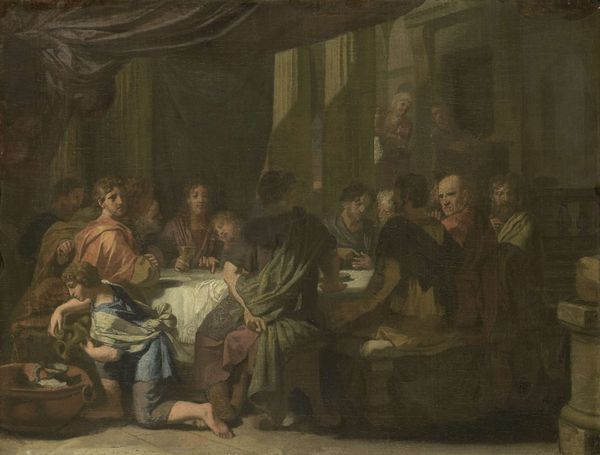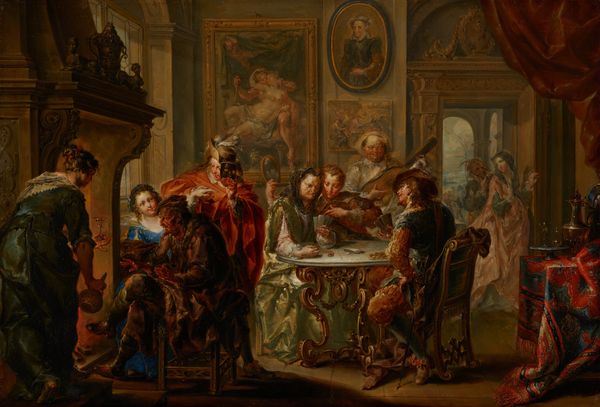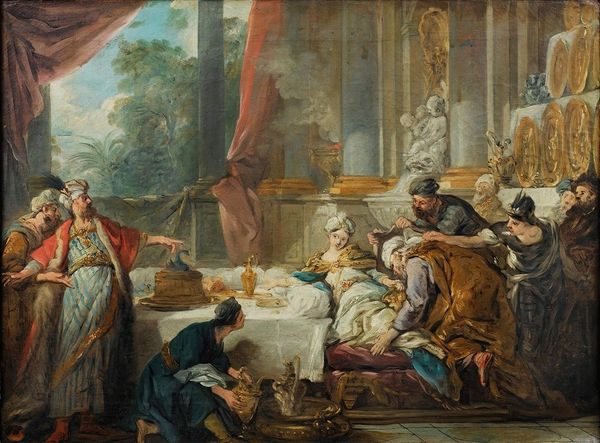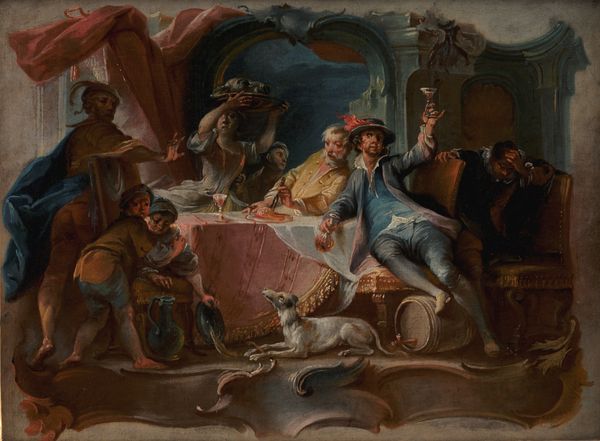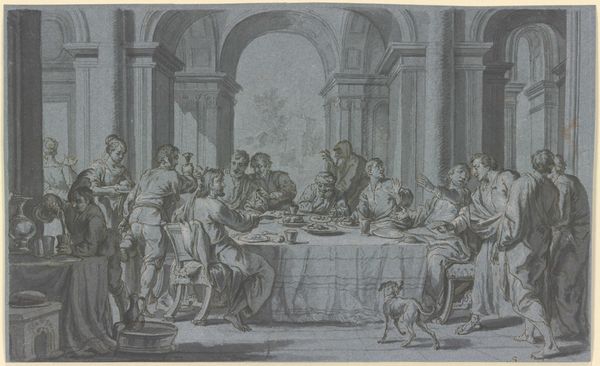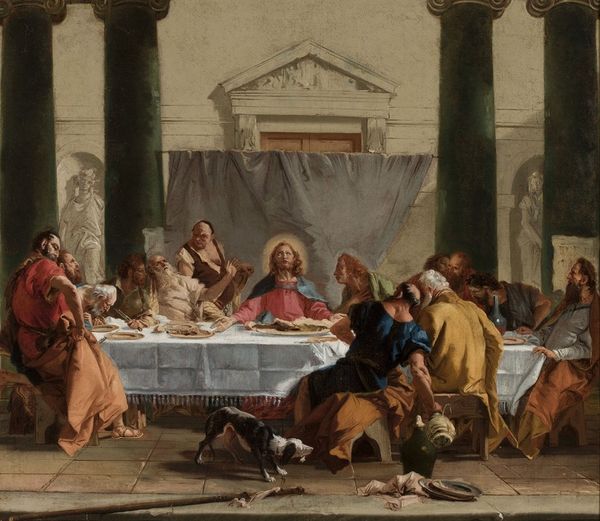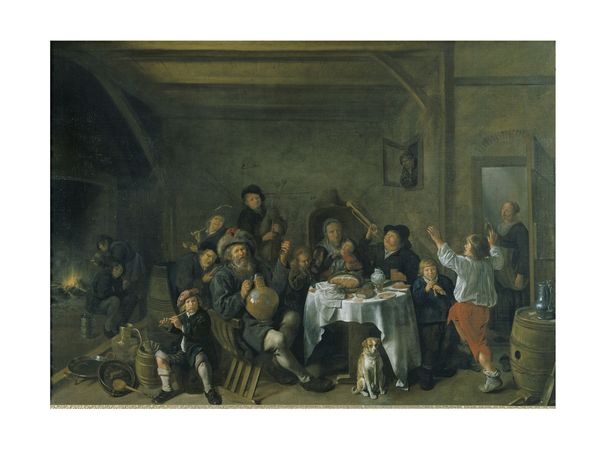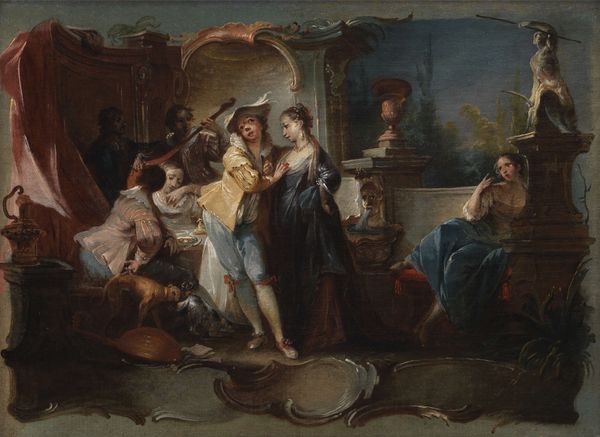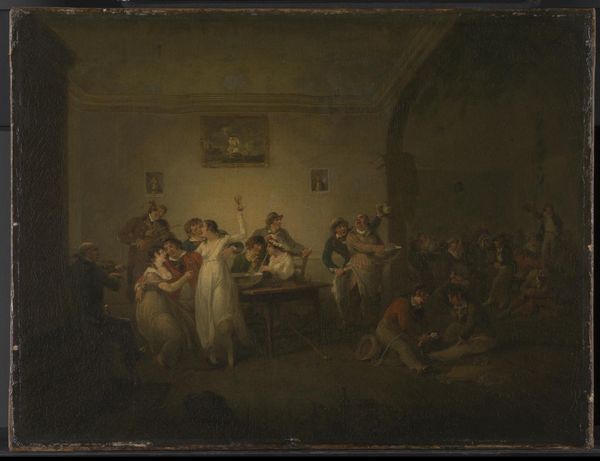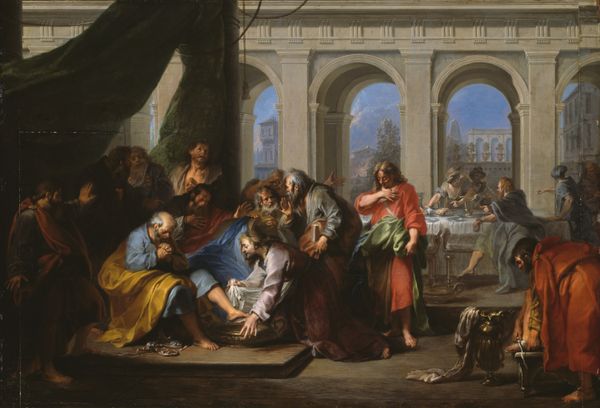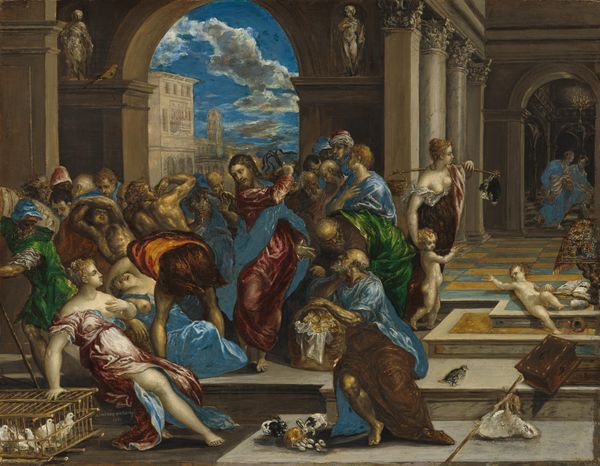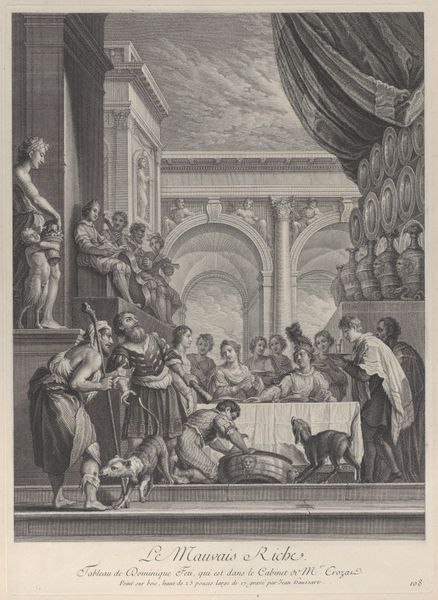
oil-paint
#
venetian-painting
#
baroque
#
oil-paint
#
figuration
#
cultural heritage
#
historic architecture
#
underpainting
#
genre-painting
#
history-painting
#
academic-art
Dimensions: overall: 67 x 104 cm (26 3/8 x 40 15/16 in.) framed: 85.7 x 122.6 x 8.6 cm (33 3/4 x 48 1/4 x 3 3/8 in.)
Copyright: National Gallery of Art: CC0 1.0
Editor: Sebastiano Ricci's "The Last Supper," painted around 1713-1714 in oil, feels to me like it’s staging a theatrical performance rather than a somber religious event. How do you interpret this work? Curator: It's fascinating to see it as theatrical, especially considering its historical context. Seventeenth-century Venetian painting often played with dramatic light and composition to evoke specific emotional responses. Ricci was working in a society structured by power, gender, and class, and he brings all that tension into play in this supposedly sacred scene. Think about how the power dynamics are staged – who's highlighted, who's relegated to the shadows? Editor: I notice Jesus is not in the center but shifted to the right; the viewer's gaze is going all over. Does this placement undermine his central role or reinforce it? Curator: Exactly! What does it mean to decenter a traditionally central figure? It can be seen as subversive or even an affirmation of community as part of its central core. This compositional choice speaks volumes, challenging established hierarchies. Editor: So you're saying the painting doesn't just depict "The Last Supper"; it actively interrogates religious, social, and potentially even gendered power structures? Curator: Precisely. Consider also how domestic servants and even a dog populate this space of supposed importance; they bring in ideas of class that we rarely consider alongside more apparent biblical ones. Editor: I never looked at it this way; it adds so much depth. It makes you question the world the artwork lived and breathes within. Thank you. Curator: It's important to read against the grain, always searching for those unspoken narratives. Analyzing artworks under socio-historical circumstances expands our reading and interpretation and brings exciting conclusions to what otherwise would seem just a depiction.
Comments
No comments
Be the first to comment and join the conversation on the ultimate creative platform.
